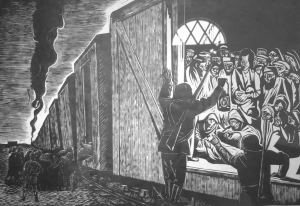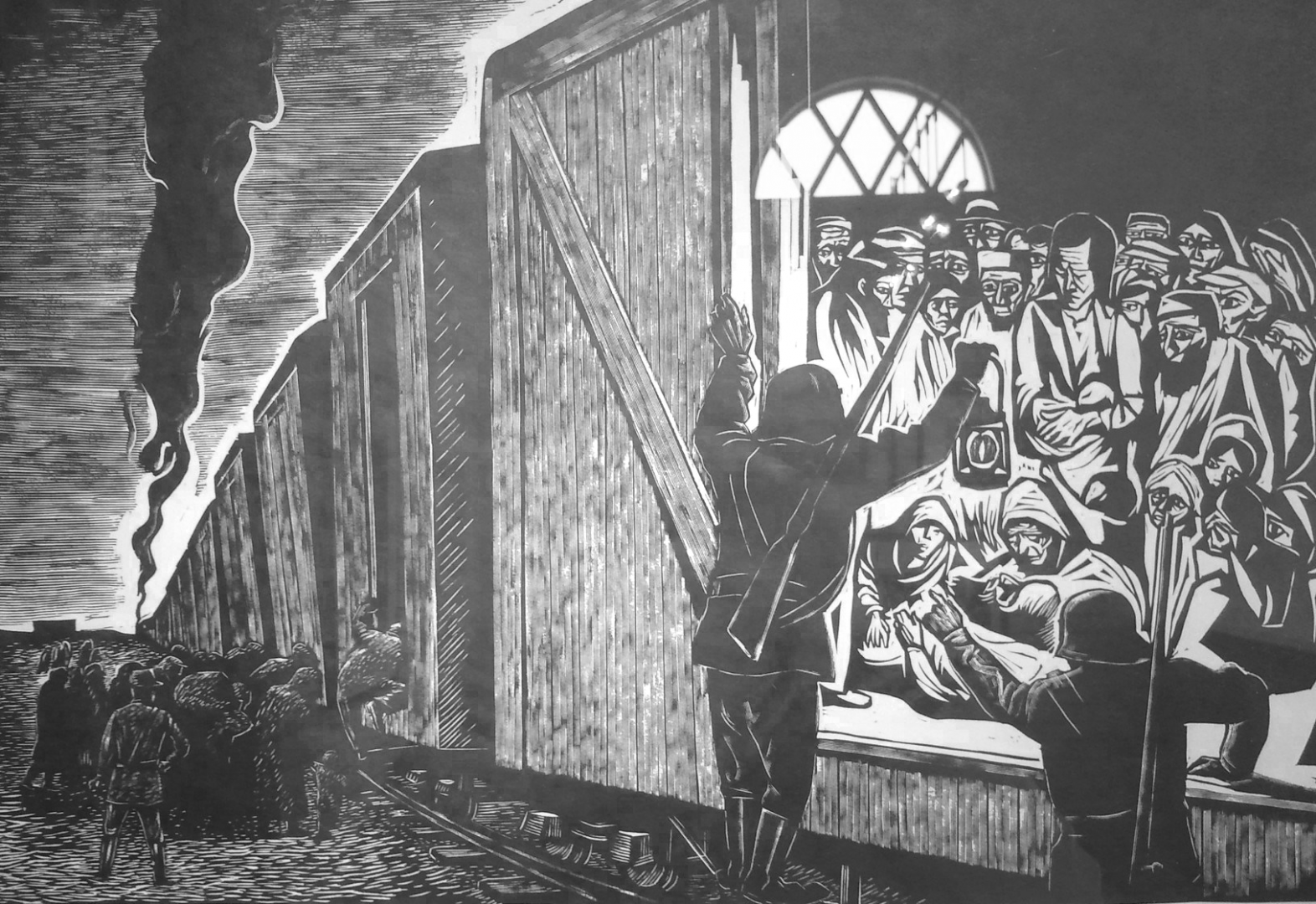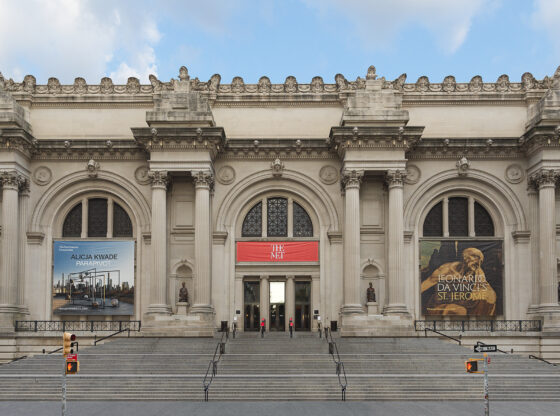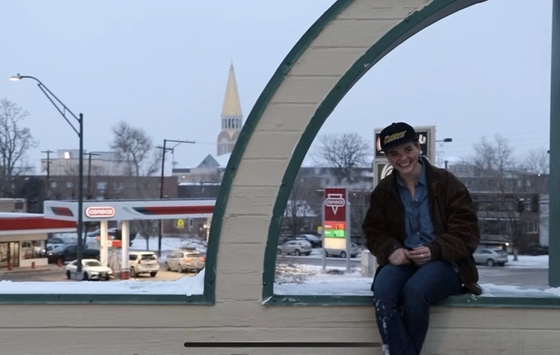
Last weekend on May 5 at 2 p.m., DU’s David and Laura Merage Foundation Art Gallery, located in the Merage & Allon Hillel Center on campus, featured the opening reception for a new art exhibition titled “Children in the Holocaust: The Print Collection of Arthur Gilbert.”
The exhibit presented a 26-piece display of black-and-white fine art prints owned by DU international studies associate professor Arthur Gilbert in conjunction with his graduate course “Genocide and the Human Condition,” a class that explores mass murder from several angles including origin, development, race, sex and political power.
After stumbling upon his first Holocaust print inside an art gallery during a summer vacation trip in Cape Cod, Mass., Gilbert began his quest for more Holocaust art.
“I have been a collector of art most my life,” said Gilbert. “And I have many collections in many areas other than the Holocaust; this collection, however, is the most recent and is designed for public viewing.”
The exhibit’s dessert reception was free and open to the public, although registration was required. From 2-3 p.m. inside the small gallery, Gilbert gave a lecture to approximately 50 attendees concerning the artwork’s subject matter.
“I asked my students to come see it because I believe in integrating visual art into the classroom,” said Gilbert. “It enriches my classes, especially since I’m fortunate to have an original collection—I don’t have to rely on slides, I have the real things. Turning my classes into a gallery is a wonderful way to connect students with subjects.”
Although Gilbert did not require students to attend, he asked them to come to gain more knowledge about the subject matter.
The display is a product from Gilbert’s previous “Etched in Memory: The Graphic Art of the Holocaust” exhibit hosted in the Jewish Community Center’s Singer Gallery, which opened in January and closed in March of this year. Kelli Theis, executive director of Hillel of Colorado and exhibit curator together with Lori Goldman, a Hillel of Colorado development associate, visited the Singer Gallery and hand-picked the works for DU’s exhibit, focusing on children’s experiences in the Holocaust.
“We hope this exhibit will offer a new perspective on the horrors children faced in the Holocaust,” said Theis. “Exhibits such as these are necessary to help ensure history does not repeat itself.”
According to their website, “Hillel: The Foundation for Jewish Campus Life” embodies the largest Jewish campus organization in the world, spanning more than 550 colleges and universities through a global network of Hillels on campuses and in communities. Hillel of Colorado is a subset of this parent foundation with three university campus Hillels established in the state. The other two Colorado Hillels are at Colorado State University and at University of Colorado at Boulder.
Housed within this center, the exhibit depicts the plight of Jewish children of the Holocaust through the eyes of Jewish and non-Jewish printmakers, survivors and witnesses, according to the event’s press release compiled by Goldman.
“We worked to focus on the fate of children because the death rate was [extraordinarily] higher in children than adults,” said Gilbert. “Children couldn’t run away and Nazis didn’t hesitate to kill children. There had been no shows that we knew of that had the same theme and it allowed us to focus on the fate of very young people.”
The Holocaust artists are composed of both survivors and of individuals who were not involved in the genocide like Mary Costanza, but studied the event nevertheless and produced artwork as a form of memorializing it.
Other artists include Samuel Bak, Leo Haas (whose artwork appears in the permanent collection of the Yad Vashem Holocaust Museum and Memorial located in Jerusalem), along with A. David Crown and Sigmund Laufer (whose rare piece titled “Fear” made its Colorado debut at the exhibit). Although Gilbert matted and framed each piece himself here in Denver, the artworks were mounted and arranged in the gallery by a hired professional.
The prints varied from lithographs, graphic art, woodcuts, etchings and dry point, and many of the prints portray scratchy, sketch-like engravings of emaciated figures with bare heads, elongated jaws and protruding cheekbones. From all around the gallery, numerous pairs of hollow eyes stare out continuously at the viewers circulating among the works.
One piece was a set of two large-scale images placed back-to-back in juxtaposition. One image featured a giant pear sliced into fourths, its insides overflowing with smaller tumbling pears. When the audience walked around to the other side of the wall, the second image offered a contrasting view of the same subject, featuring a giant captive pear held together with nuts and bolts, a heavy lock imposed upon its surface. According to Goldman, the pear is a metaphorical representation of the Jewish people’s fruitfulness before the mass murder and their captivity during the Holocaust.
“The images are not easy, as one would expect them not to be,” said Goldman. “But we’re very honored to have them.”
Before the exhibit’s opening date, Theis invited middle-school students aged 11-14 years from the Blessed Sacrament Catholic School in Denver to see the works and discuss their content. The students also participated in an activity involving songs and poems written by Holocaust children during their internment at the Terezin Concentration Camp.
“That was an extraordinary experience,” said Gilbert. “They didn’t shy away from frightening images. I really consider that one of the highlights of this whole venture: to have children try to connect with other children who had died.”
In the future, Gilbert, Theis and Goldman plan to make “Children in the Holocaust” a traveling exhibit, visiting other Hillels within the nation and perhaps around the world. While at DU, the display will run until June 9 on the Hillel Center’s second floor. Center hours are 9 a.m. to 9 p.m. Monday and Friday; 9 a.m. to 5 p.m. Wednesday and Thursday and 9 a.m. to 7 p.m. on Tuesday.











